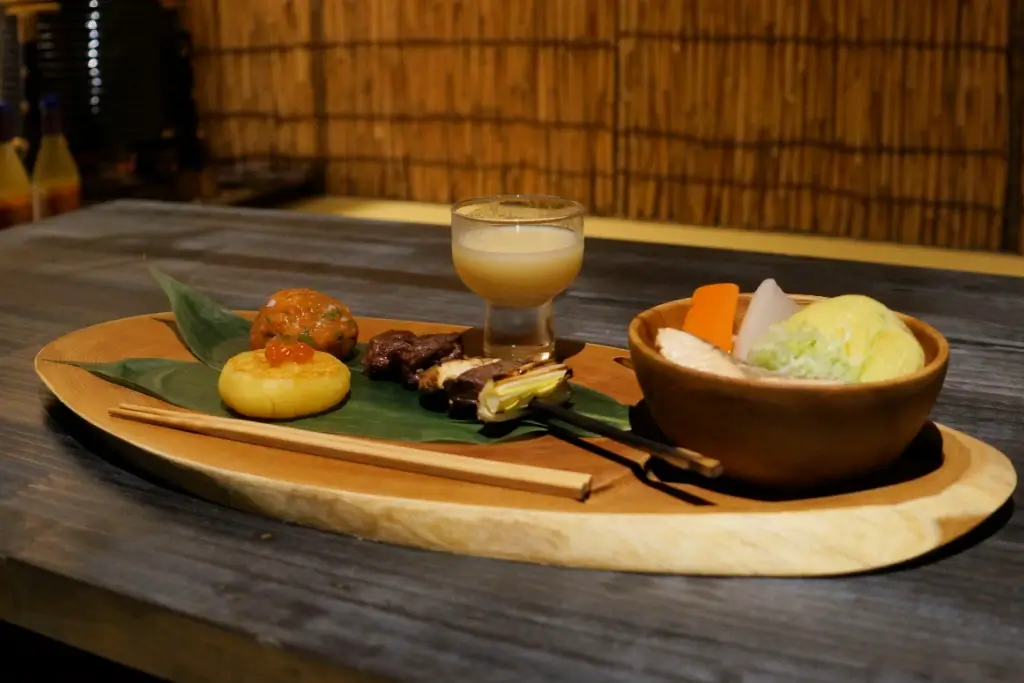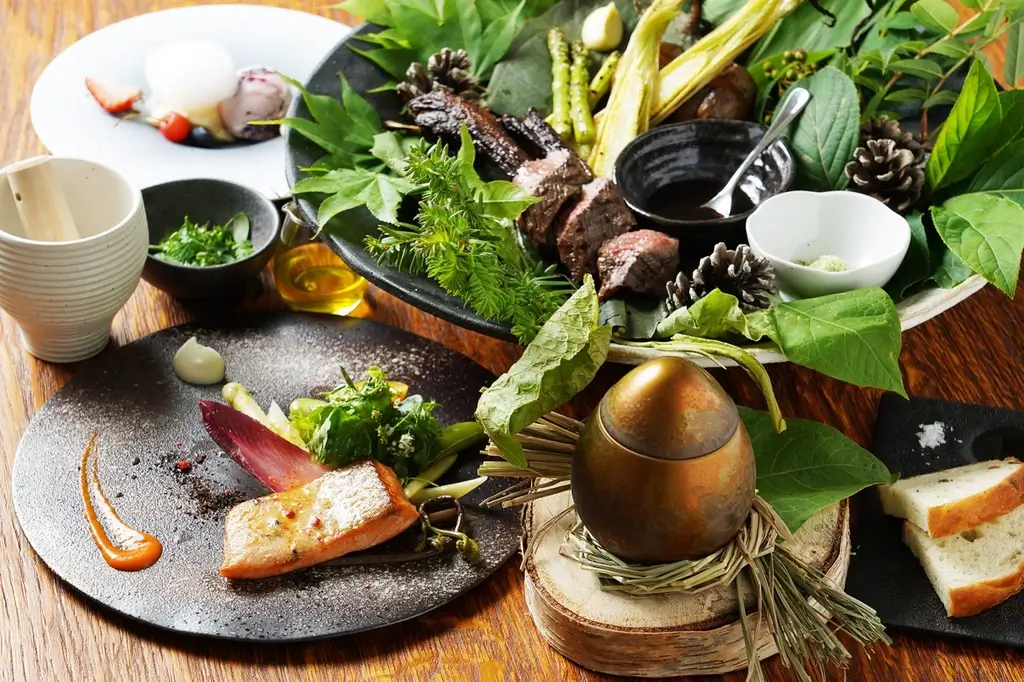You might not know that Japan has an indigenous culture completely different from the rest of the country: the Ainu culture. Although not as prominent today, Japan is making significant efforts to restore its unique and fascinating elements, including its cuisine. Let’s dive deeper into the distinctive features of Ainu cuisine and explore delicious dishes like sito!
Table of Contents
ToggleWho are the Ainu?
The Ainu are an indigenous group of people who mainly live in Hokkaido. Some also live in northern Honshu and nearby areas like Sakhalin Island in Russia. They had lived in these areas long, even before the Japanese and Russians arrived. Today, over 20,000 Ainu live in Japan, though some people think there might be more who aren’t officially counted.

In the past, these people lived by hunting, fishing, and gathering food. They believed everything in nature, such as animals, plants, and rivers, had a spirit called kamuy. They had special ceremonies to honor these spirits, and one of their most important ceremonies involved raising a bear cub and releasing its spirit. These people also wore unique clothing made from natural materials decorated with beautiful designs.
Over time, the Ainu had no choice but to assimilate Japanese society, and many of their traditions faded. Yet, Japanese people are now working to revive the culture. Festivals celebrate their music, dance, and crafts; shops sell handmade items like wood carvings. There is also a museum in Hokkaido called the “Upopoy National Ainu Museum”, where you can learn about this Indigenous group’s rich history and traditions.
Are you looking for great snacks from places like Hokkaido? Check out Sakuraco! Sakuraco delivers traditional Japanese snacks, teas, and sweets from local Japanese makers directly to your door so you can enjoy the latest treats directly from Japan!
What does Ainu cuisine usually consist of?
Ainu cuisine is distinctive and very different from regular Japanese food. It uses fresh ingredients such as fish, deer, and wild plants that they gather from the forests and rivers. Salmon is one of the main ingredients, and deer meat is also used. They cook their food by roasting, boiling, and grilling. Plus, they don’t use soy sauce or any other seasoning like other Japanese dishes. Instead, they usually flavor their food with fish and animal oils, giving it a rich and hearty taste.
What are the traditional dishes of Ainu cuisine?
Sito
Sito is a special type of Ainu dumpling made from grains, including proso millet, foxtail millet, and sometimes rice. The grains are soaked overnight, pounded into flour, and then carefully boiled. Because grinding the grains into flour takes a lot of time and effort, making sito was seen as a fancy delicacy. In the past, people sang traditional songs while pounding the grains together to make the dough.

This dumpling wasn’t a daily meal but a delicacy served during important festivals, like the Bear Festival and the Ancestors’ Festival. Sito made offerings in nice boxes or skewered on sticks for the gods. When served to people, these dumplings were eaten with tasty toppings like mashed salmon roe or a flavorful sauce made from oils and kelp.
Sayo

Sayo is a tasty side dish made from boiled grains. It’s often enjoyed alongside ohaw (soup). Sayo is like a light porridge that refreshes your mouth after eating richer foods. They cook sayo in a special pot to keep its taste different from other foods and even use a separate spoon to serve it. In addition, there are many fun varieties of sayo! Each one brings its unique flavor and ingredients. For example, three typical types are Kikinni, which has bird cherry tree bark; Ento, which includes a mountain plant; and Cipor, which has salmon roe mixed in.
Rataskep

Rataskep, which means “mixed food,” is a special dish from the Ainu culture. It is made by stewing wild vegetables and beans until they are soft, then mashing them together. It often includes tasty ingredients such as potatoes and other root vegetables, making it healthy and delicious! The dish is flavored with bear or fish oils and a pinch of salt. Although the dish is used in ceremonies because it’s considered sacred food, it can be enjoyed daily.
Saketoba

Saketoba is a popular treat from the Ainu people’s way of preserving food. This dish is made from autumn salmon, cut into thin slices, and dried with the skin still on. The salmon is rinsed with seawater and dried in the sea breeze, giving it a nice salty flavor. People grill saketoba gently and break it into small pieces, making it a great snack, especially when enjoying a drink! Moreover, it also pairs well with rice and can be used as an ingredient in many dishes.
Pocche-imo

Pocche-imo, or penekoshoi-imo or munini-imo, is a lovely potato dish from Hokkaido. It uses the cold winter to preserve potatoes. After the fall harvest, small, odd-shaped potatoes are left outside to freeze. When spring arrives, the potatoes thaw, making them soft and mushy. The soft potatoes are soaked in water to collect the starch, which is then shaped into balls, fermented, and baked in the ashes of a fire. Nowadays, some people enjoy modern twists on pocche-imo by adding artificial flavors and frying them. Then, they also eat them with seaweed or a mix of sugar and soy sauce.
Where can I enjoy Ainu cuisine in Japan?

Ainu restaurants may not be common, but if you want to experience Ainu cuisine in Japan, the best place to visit is Hokkaido! You can try traditional food in Hokkaido at three beloved restaurants: HINNA HINNA KITCHEN EN, HARU RAN NA Open Flame Dining and Cafe, and Café RIMSE. Here, chefs prepare delightful meals using fresh ingredients from Hokkaido. In Tokyo, Harukor is the only restaurant serving Ainu dishes. This cozy izakaya feels warm and inviting, with walls decorated with special Ainu items like a carved wooden instrument and traditional clothing.
What makes Ainu cuisine different from other types of food in Japan?
Ainu cuisine stands out from other Japanese foods because it features fresh and wholesome ingredients sourced directly from nature. The cooking methods and unique seasoning techniques also stand out, as they do not use any common artificial seasonings. Instead, they use natural ingredients to create flavors, giving each dish a distinct and hearty taste.

Furthermore, these dishes hold meaning during important festivals and ceremonies. They are deeply connected to the Ainu people’s culture and traditions. So, what part of this cuisine would you like to try the most? Leave a comment and share your thoughts!










